Scroll down or click on Home to return back
Use Search engine below to fine more pages.
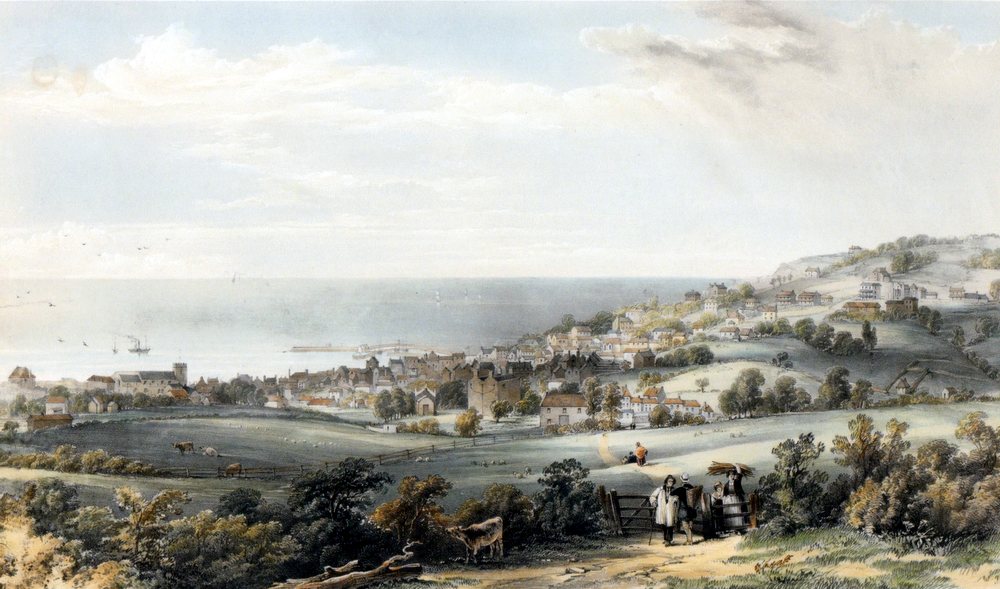
Jane Austen references in Persuasion to Charmouth
Chapter 11
The scenes in its neighbourhood , Charmouth, with its high grounds and extensive sweeps of country, and still more its sweet, retired bay, backed by dark cliffs, where fragments of low rock among the sands make it the happiest spot for watching the flow of the tide, for sitting in unwearied contemplation
Chapter 14
Mary had had her evils; but upon the whole, as was evident by her staying so long, she had found more to enjoy than to suffer. Charles Hayter had been at Lyme oftener than suited her; and when they dined with the Harvilles there had been only a maid-servant to wait, and at first Mrs. Harville had always given Mrs. Musgrove precedence; but then she had received so very handsome an apology from her on finding out whose daughter she was, and there had been so much going on every day, there had been so many walks between their lodgings and the Harvilles, and she had got books from the library, and changed them so often, that the balance had certainly been much in favour of Lyme. She had been taken to Charmouth too, and she had bathed, and she had gone to church, and there were a great many more people to look at in the church at Lyme than at Uppercross; and all this, joined to the sense of being so very useful, had made really an agreeable fortnight.
It's well-recorded that Jane Austen visited the Assembly Rooms on several occasions while she was in Lyme. What is less well recorded is exactly where she stayed in the town -- probably in several different lodging houses. A short way up Broad Street there is a rather seedy looking building bearing a blue plaque (pictured below) with the inscription "Pyne House: This is the most likely lodging of Jane Austen, whose visits to Lyme in 1803 and 1804 gave birth to her novel 'Persuasion'."

But we can never visit the Assembly Rooms at Lyme Regis which Jane Austen visited in 1804, for they were demolished in 1928.
Jane Austen famously danced there on her visit in 1804:
The ball last night was pleasant, but not full for Thursday. My father staid contentedly till half-past nine (we went a little after eight), and then walked home with James and a lanthorn, though I believe the lanthorn was not lit, as the moon was up, but sometimes this lanthorn may be a great convenience to him. My mother and I staid about an hour later. Nobody asked me the two first dances; the next two I danced with Mr. Crawford, and had I chosen to stay longer might have danced with Mr. Granville, Mrs. Granville’s son, whom my dear friend Miss A. offered to introduce to me, or with a new odd-looking man who had been eyeing me for some time, and at last, without any introduction, asked me if I meant to dance again. I think he must be Irish by his ease, and because I imagine him to belong to the honbl. B.’s, who are son, and son’s wife of an Irish viscount, bold queer-looking people, just fit to be quality at Lyme
(Letter to Cassandra Austen dated 14th September 1804)
Here is a description of the rooms from my copy of John Fletham’s early tourist guidebook, A Guide to all the Watering and Seabathing Places dating from 1803, which is slightly apologetic in tone:
Lyme has a small Assembly-Room, Card-Room and Billiard-Table all conveniently ranged under one roof ; and had the Library been joined to it, all the amusements which the place can furnish would have been comprised in one building. The situation for this edifice is happily chosen, as it commands a charming marine view as far as the Isle of Portland, eight leagues off, and the interior is compact and well arranged. Magnificence is not essential to enjoyment: often more happiness is found in a cottage than in a palace; and the rooms at Lyme frequently exhibit as cheerful countenance as are to be seen at Bath or Brighton.
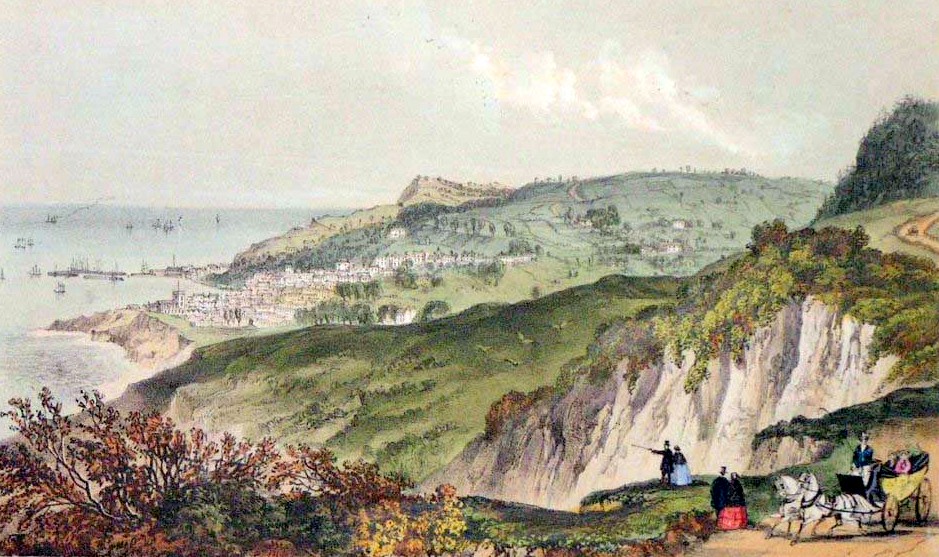
.jpg)
.jpg)
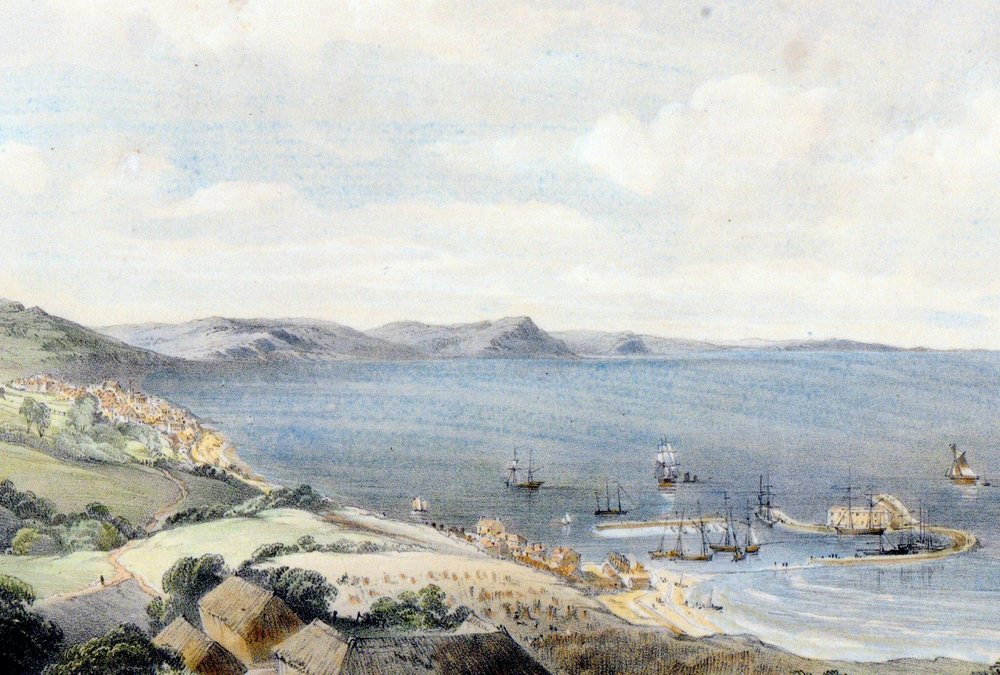
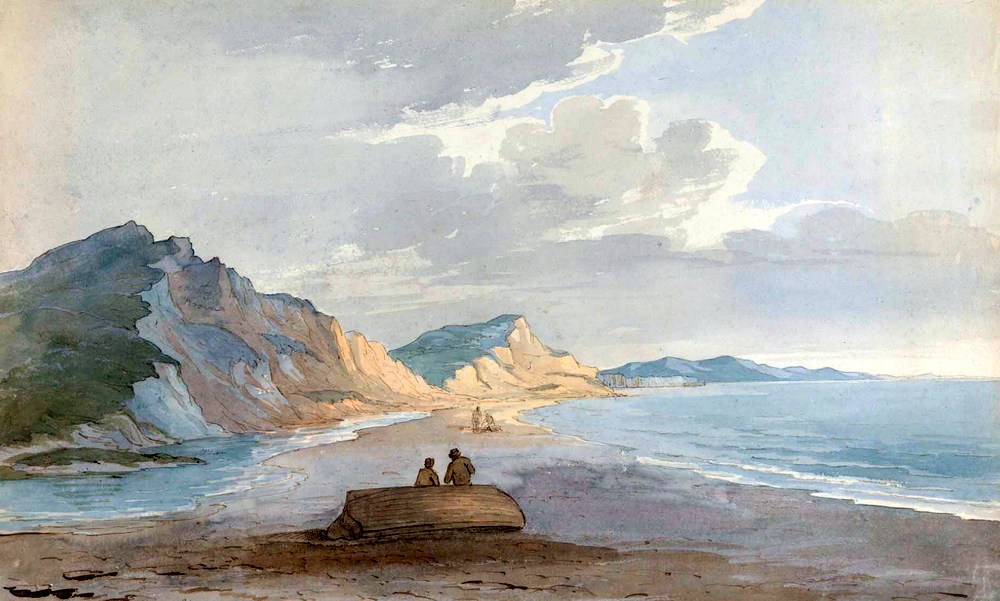
.jpg)
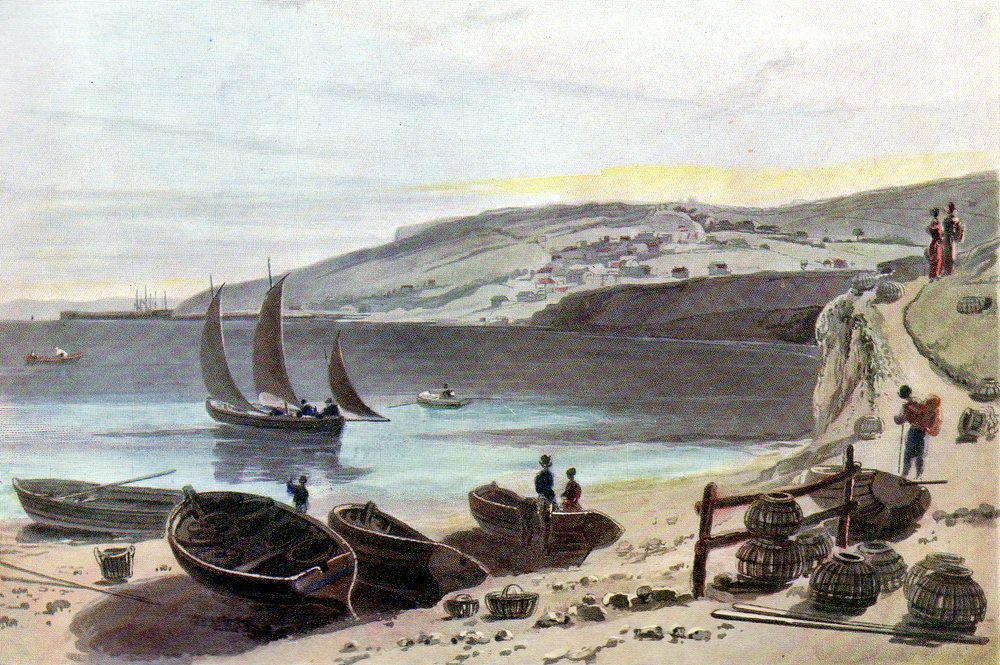
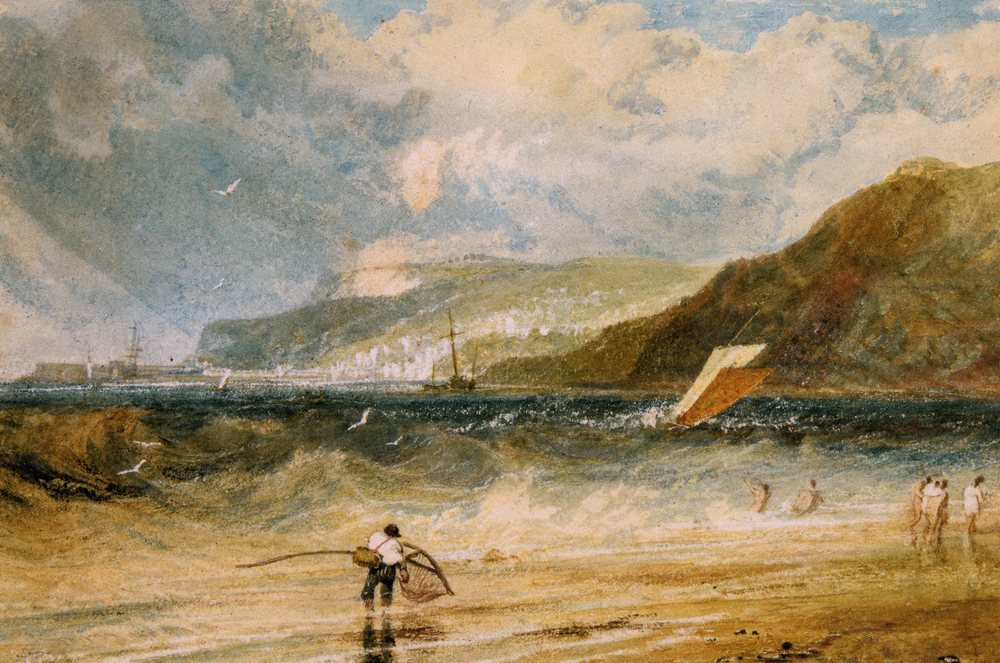

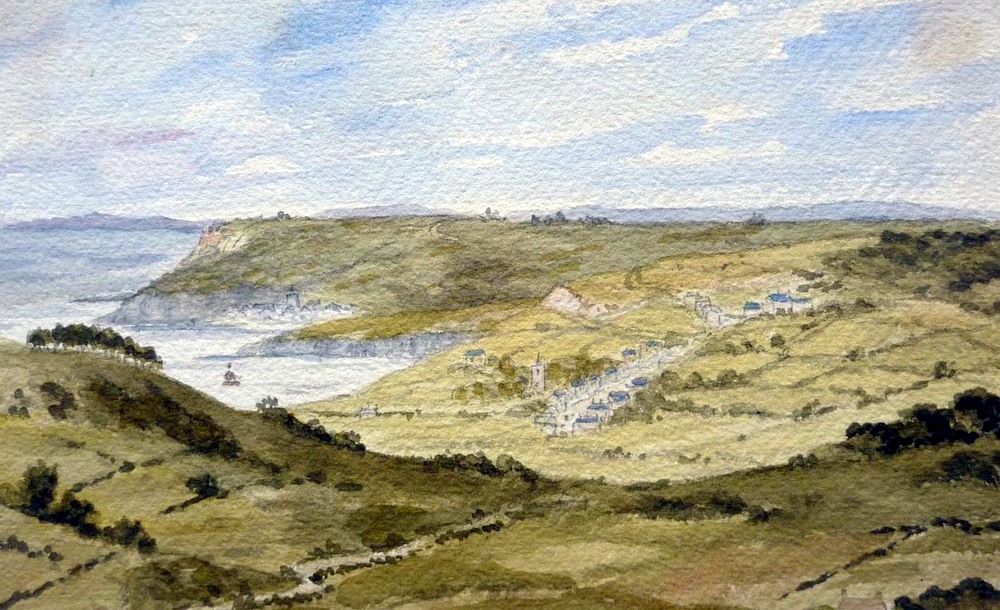
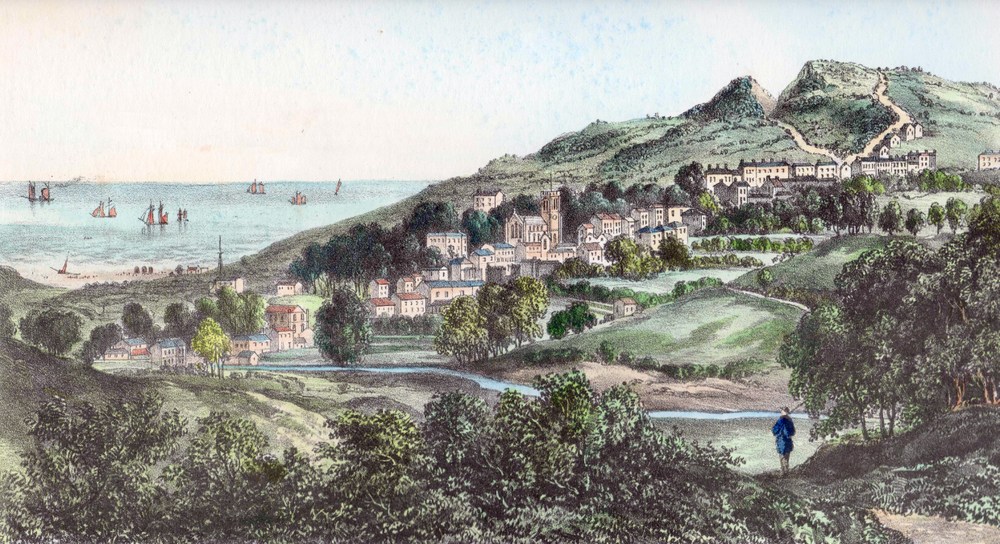




Closer study of the Census shows it to be the occupants of the houses that were in the village, as there is reference to a house, where Mrs. Mary Tozer lived as being void. Many of the inhabitants rented their properties from wealthy landowners, who lived elsewhere and hence do not appear on the list. The Poor Rates and Land Taxes for the Year 1812 supply this information, but often leave out the occupants, especially if there are a number in the same building and is grouped together as "others". This is where the Census is exiting as it gives the number if Males and Females in each House. It also describes the occupation of the main person. I was particularly exited to find that Joseph Bradbeer was described as a Post Master. He would have been running his business from what is Nisa( Charmouth Stores), which shows it have been a shop for over 2 centuries. Almost every trade was represented and included Dress maker, Butcher, Carpenter,Shoe Maker,Fisherman,Builder, Dairyman,Baker,Taylor,Blacksmith and Surgeon. There were also three Inns at that time, which were the Fountain run by George Harvey and owned by Squire Gordon, who the following year closed it down and lived in it what is today Charmouth House. The George was owned by Samuel Gundry, who ran his brewery from the old building that still forms part of Palmers Brewery at Bridport. The tenant was Richard Hawkins. The largest of the Inns was the 3 Crowns whose landlord was Richard Clemoes, it's name was later to change to the Mail Coach Inn and finally the Coach and Horses. There are four men and five women shown as living there at that time.
If we were to go back two centuries we would be surprised to see that the village had its own industry in the shape of Sail Making. For three of these business men are revealed on the list, they are William Burnard, George Webber's widow and Jacob Ridley Kitt. They all rented or owned many of the fields in the village which would have been covered with Flax,the staple for their trade. The largest at that time was Kitts,which stood on the site of Charmouth Lodge,but at the end of the Napoleonic Wars in 1815, was also the year that they went bankrupt with the decline in sails for shipping.
The village had been centred along the Street for many centuries and the majority of those on the list were living along it. Both Lower and Higher Sea Lane were surrounded by fields, with few buildings. John Robins who appears in the list had recently built the fine three storey. Sea Horse House in Rocket Lane as the latter was called then. Old Lyme Hill had a number of buildings along it, including the Poor House and the cottages where the Gordges lived.
There were a number of farms surrounding the Street, the largest of which had been Charmouth Manor Farm, which had been bought by Lieutenant James Warden in 1788 and he kept the fields to the South of The Street, which became known as Sea Lands. Those fields to the north were bought by the village Curate, Rev. Brian Combes and became known as Back Lands. By 1812, James daughter, Ann Liddon is renting them to John Harris, who appears as a Farmer on the list. Brian Combes, appears as the largest Land Owner and is renting his farm and other properties to some of the people who appear on the list. He is Rector of Catherston and although Curate for Charmouth, does the work of the absentee Rector, Rev Audain,who has quite a colourful life. Another clergyman, Reverend Puddicombe, the vicar of Branscombe, has inherited Wood Farm from his sister, Elizabeth, wife of James Warden. Mary Newton, William Burnard and William Palmer, who appear in the list are renting property from him. William Burnard runs his business from the Mill buildings. William Browning, a coach man living in building opposite, owned by Frances, son of Joseph Bradbeer who share part of it and runs his Post Office from there.
The Mail and two other coaches pass daily through Charmouth from London to Plymouth, it being the Great Western Road – Bathing Machines are kept on the beach during the summer season, for the accommodation of the company who resort to this truly pleasant and healthy spot - advert in 1810.
| Surname | Christian | Occupation | M. | F. |
| Baker | Jacob | Shoemaker | 6 | 1 |
| Bile | Joseph | Laborer | 2 | 2 |
| Bradbeer | Joseph | Post Master | 1 | 1 |
| Bragg | William | Surgeon | 2 | 3 |
| Browning | Thomas | Coach Man | 1 | 1 |
| Bugg | Robert | Laborer | 3 | 2 |
| Bull | John | Gentleman | 2 | 1 |
| Bullen | Simon | Gentleman | 3 | 3 |
| Burnard | William | Sail Cloth Maker | 1 | 3 |
| Butcher | William | Taylor | 1 | 3 |
| Channing | Major | Gentleman | 2 | 4 |
| Channon | Maria | 2 | ||
| Clapcott | Peter | Gentleman | 2 | 2 |
| Clarke | Mrs | Widow | 1 | 5 |
| Clemens | John | Inn Keeper | 4 | 5 |
| Cole | William | Baker | 2 | 3 |
| Combe | Brian | Curate | 2 | 3 |
| Cood | Robert | Widow | 2 | |
| Cook | Amos | Carpenter | 1 | 3 |
| Cozens | William | Laborer | 2 | 3 |
| Cozens | Thomas | Shoemaker | 4 | 5 |
| Dark | Richard | Laborer | 1 | 4 |
| Diment | Benjamin | Blacksmith | 4 | 2 |
| Diment | Henry | Baker | 2 | 3 |
| Edmonds | Mrs | 3 | ||
| Edwards | Mary | Widow | 1 | 2 |
| Edwards | William | Butcher | 3 | 3 |
| Eyres | Mr. | 3 | 1 | |
| Fipping | George | 1 | 1 | |
| Gale | Charles | mason | 1 | 3 |
| Good | Joseph | Rev. | 2 | 4 |
| Goodling | Henry | Laborer | 1 | 2 |
| Gorge | Digory | Laborer | 2 | 3 |
| Gorge | Widow | 4 | 1 | |
| Griffin | James | Laborer | 2 | 1 |
| Hackman | Joseph | Gentleman | 1 | 3 |
| Harris | John | farmer | 4 | 2 |
| Harris | Stephen | Gentleman | 1 | 5 |
| Hart | George | Gentleman | 1 | 1 |
| Harvey | George | Inn Keeper | 2 | 2 |
| Haskins | Henry | Thatcher | 3 | 7 |
| Hawkins | Richard | Inn Keeper | 1 | 3 |
| Haycroft | John | Taylor | 2 | 1 |
| Hill | Mary | Widow | 2 | |
| Hunter | John | Laborer | 2 | 4 |
| Juson | William | Gentleman | 1 | 2 |
| Kitt | Jacob Ridley | Sail Cloth Maker | 6 | 3 |
| Lock | Sam | Carpenter | 3 | 4 |
| Lock | William | Laborer | 1 | 3 |
| Love | James | Butcher | 4 | 3 |
| Loveridge | Aaron | Dairy man | 2 | 3 |
| Newton | Mary | Spinster | 2 | 4 |
| Norman | Henry | Laborer | 2 | 4 |
| Oliver | William | Shoemaker | 2 | 1 |
| palmer | William | Butcher | 3 | 6 |
| Pattison | Mr | Gen. | 1 | 8 |
| Paul | John | House building | ||
| Poor House | 5 | |||
| Potter | John | Shoemaker | 5 | 3 |
| Powell | James | Butcher | 3 | 3 |
| Rickard | Miss | Spinster | 2 | 3 |
| Rickard | Miss | Lodgers | 2 | |
| Ridcout | Mrs | 3 | ||
| Robins | John | Gentleman | 2 | 5 |
| Roper | William | Fisherman | 2 | 4 |
| Rudd | Mrs | Widow | 1 | 8 |
| Russell | William | Shoemaker | 3 | 4 |
| Shute | Thomas | Gentleman | 3 | 5 |
| Smith | Henry | Miller | 2 | 5 |
| Stokes | Richard | Gentleman | 1 | 1 |
| Symes | Simon | Gentleman | 1 | 1 |
| Symes | Simon | Lodgers | 3 | |
| Tozer | House -vacant | |||
| Wavring | Mrs | 3 | ||
| Way | William | Mason | 4 | 3 |
| Webber | Mrs | 1 | ||
| Welch | F. | Mantll Maker | 1 | 3 |
| West | Richard | Laborer | 1 | 6 |
| Wheaton | Philip | Carpenter | 1 | 5 |
| Whore | Robert | Laborer | 7 | 3 |
| Wild | John | Laborer | 4 | 3 |
| Willcox | Mrs | Widow | 4 | |
| Total: | 156 | 247 |